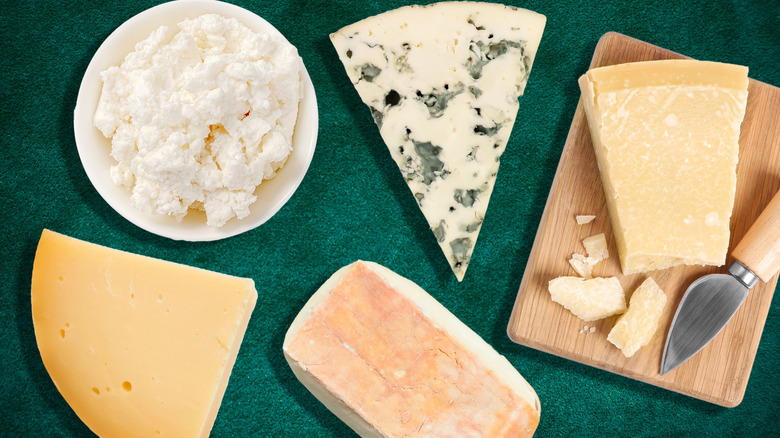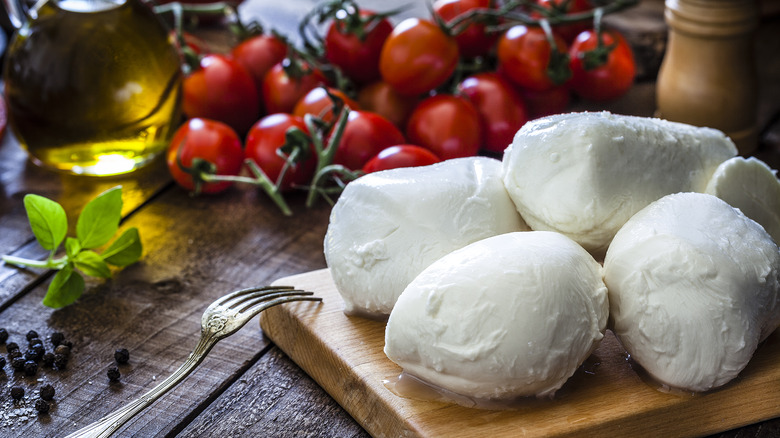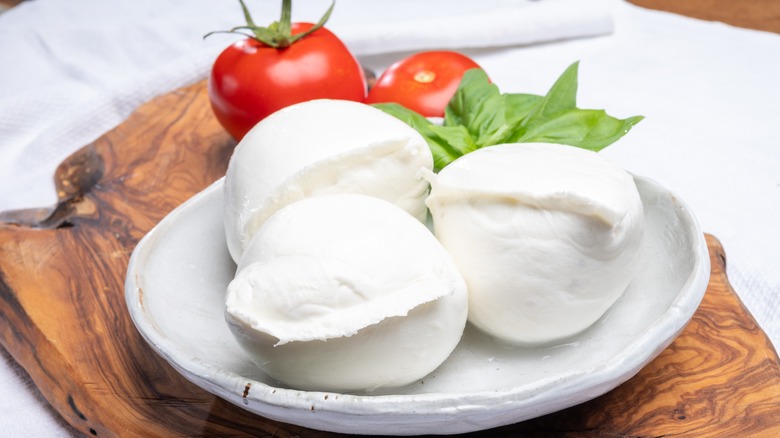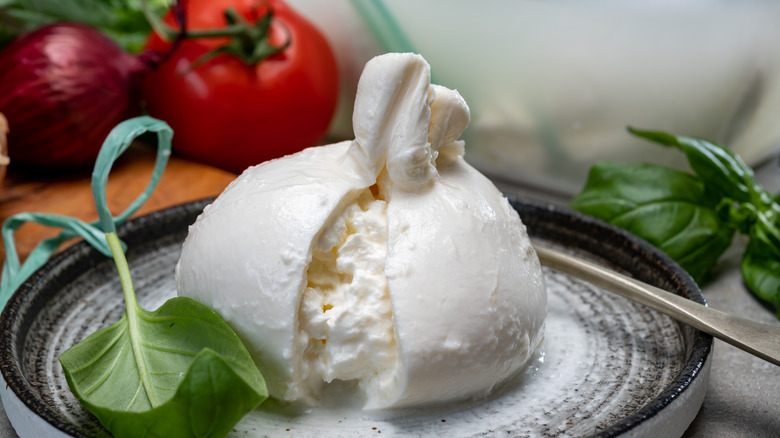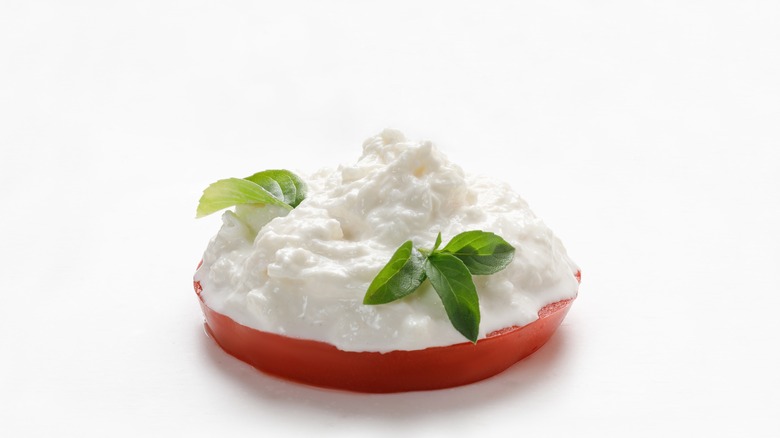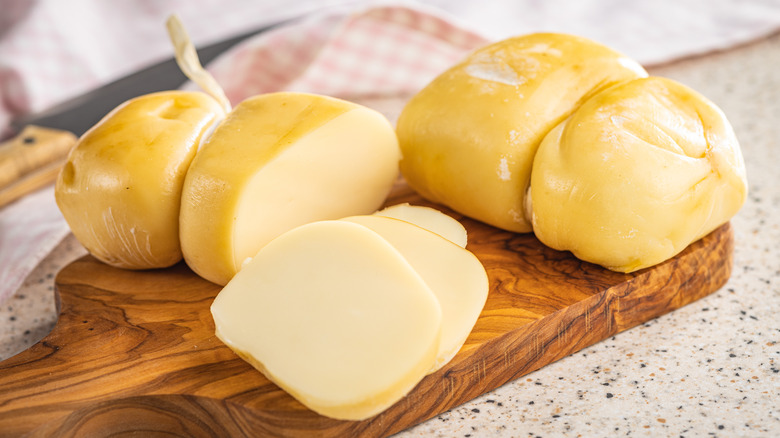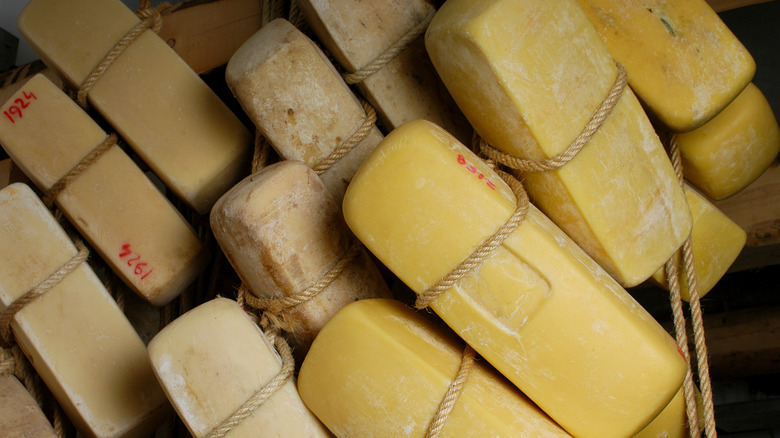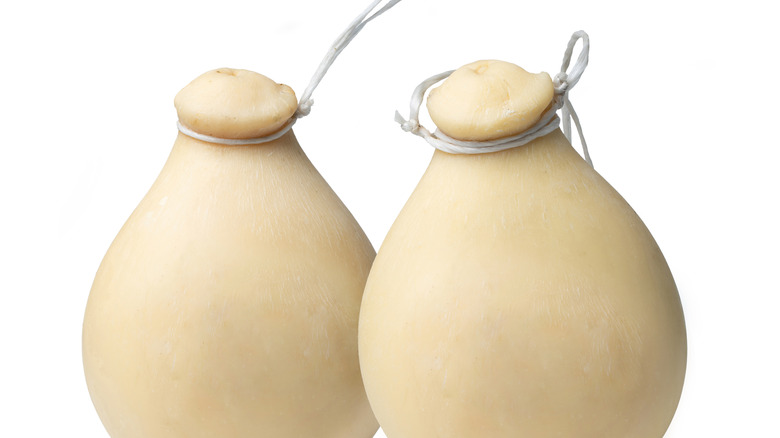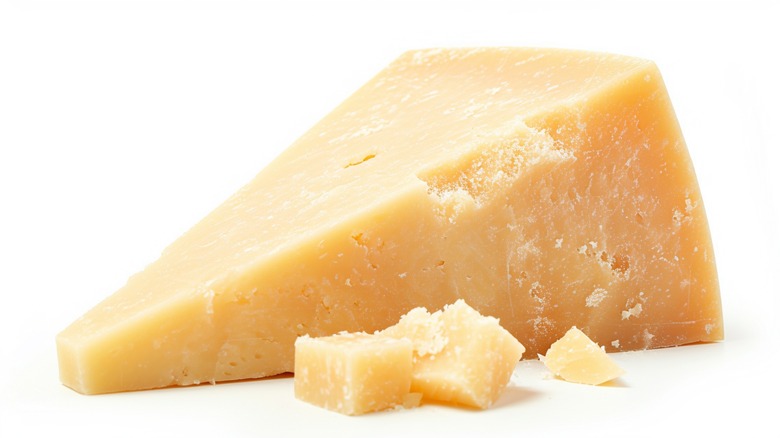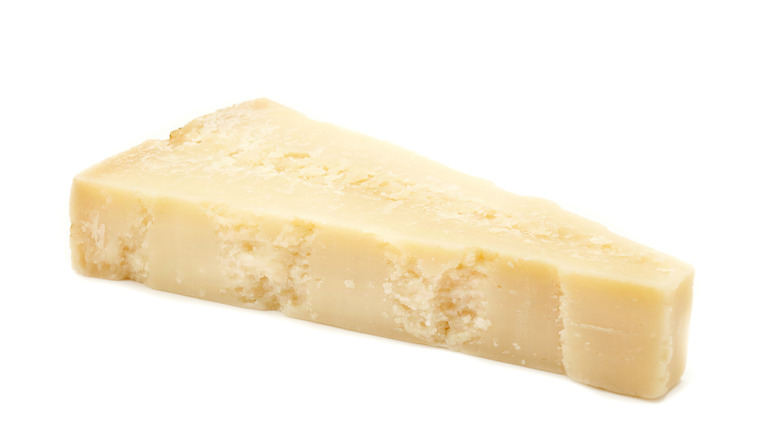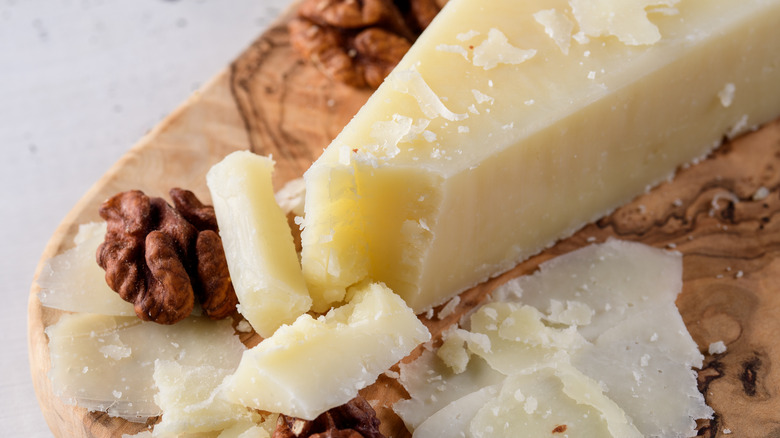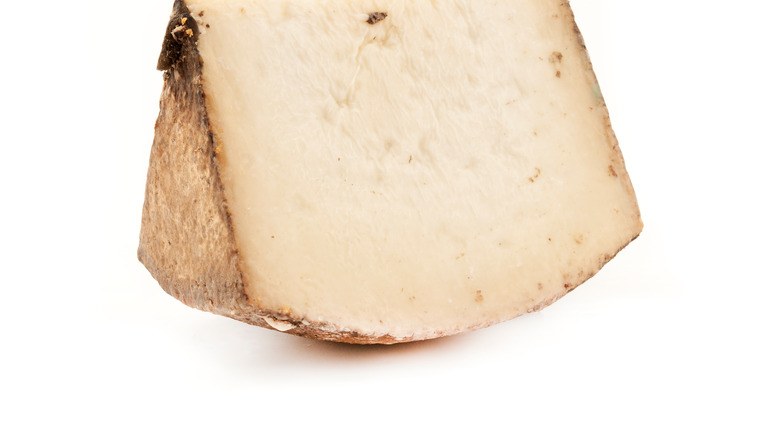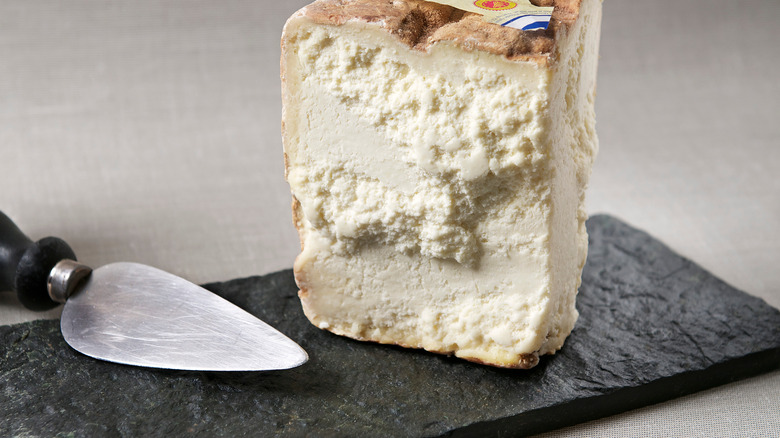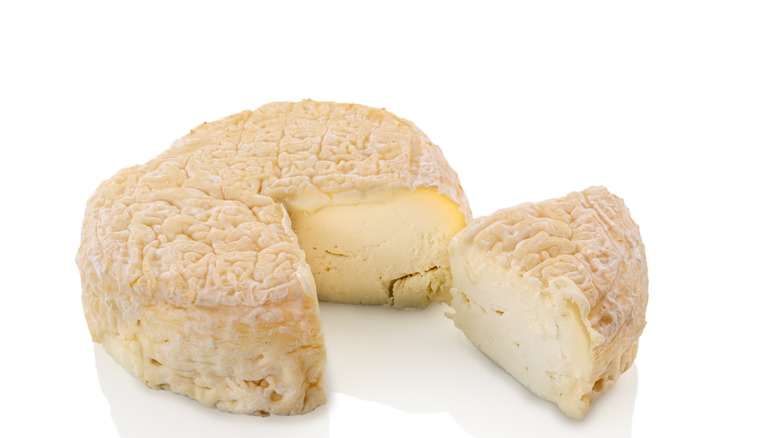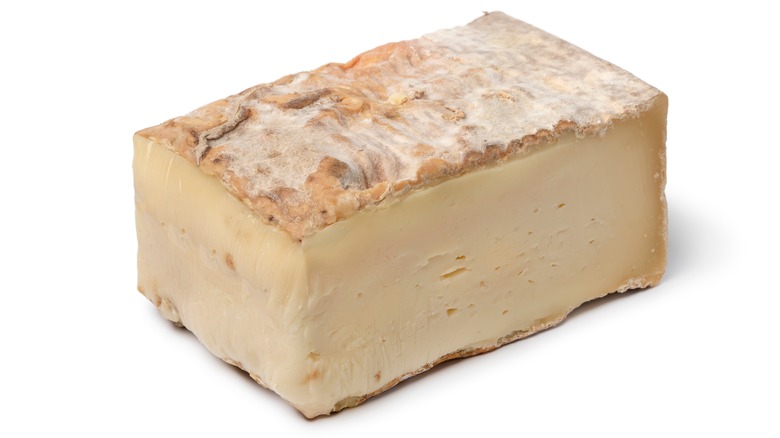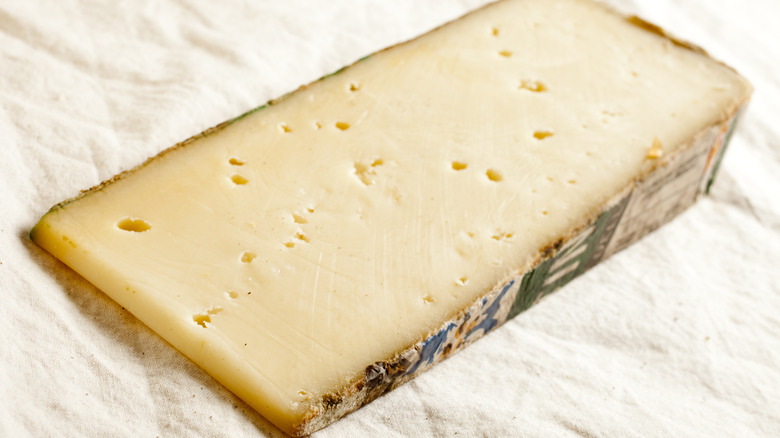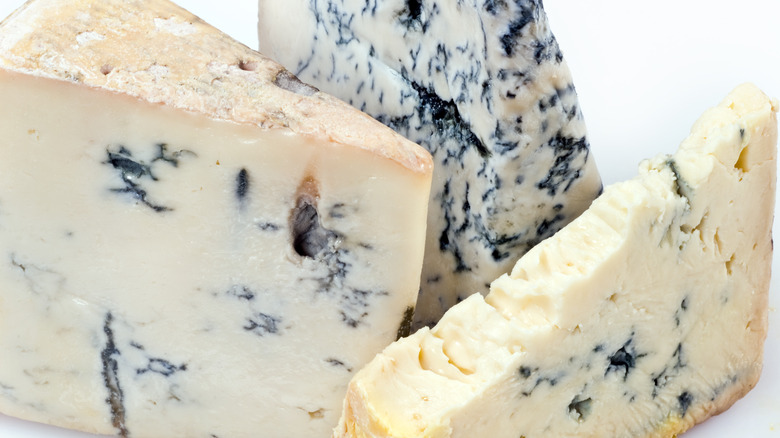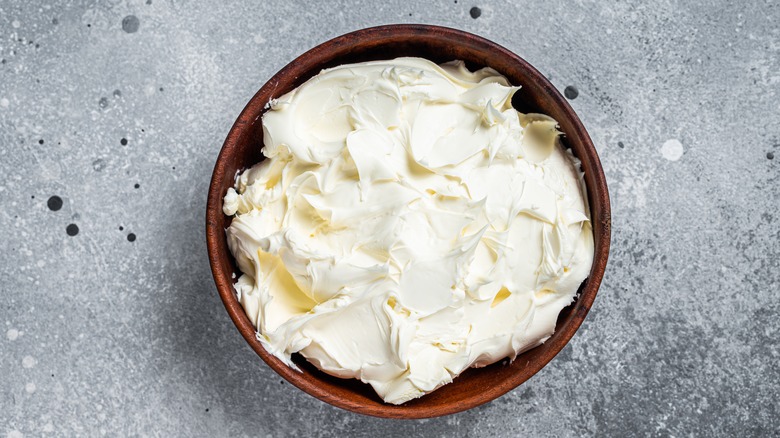The Ultimate, Expert-Curated Guide To Italian Cheeses
The Italian cheesescape is far vaster than Parmigiano and mozzarella. According to Jessica Sennett of Cheese Grotto, Italy boasts over 2,500 different styles of cheese.
That Americans may be unfamiliar with many formaggi is understandable, she says. "There is a discrepancy between what is popular internationally and what is popular in Italy," she says. "International distribution of cheeses is incredibly complex and rooted in a history of immigration, transported recipes, and trade politics, so certain Italian cheeses become more widely distributed among certain nations over others."
For Tenaya Darlington — aka Madame Fromage, a Cheese Educator & Author – this discrepancy may also come down to the ways in which cheeses are purchased in the U.S. versus in Italy. "In the States, we're all about brands," she says, "but for Italians – and most Europeans I meet – it's all about styles and regions. Italians eat the cheeses of their birthplace. So if they're from Lombardy, they love Taleggio. If they're from Sicily, they wax on about their local Pecorino or about Ragusano."
Emilio Mignucci, Vice President of Di Bruno Bros., echoes this. "Italy is a very provincial country regionally," he explains. "The most popular cheeses in Italy are the most local ones to wherever you are."
Here are the ones our experts think you should know.
Fior di latte
Its name might be unfamiliar, but chances are you've encountered this cheese whose name translates to "milk flower."
"Fior di Latte is cow milk mozzarella," explains Jessica Sennett. A pasta filata or stretched curd cheese, fior di latte is firm, mild, and best consumed fresh — ideally within a few hours of being produced, according to Sennett. "The higher moisture mozzarellas won't last as long as the lower moisture ones that almost act like string cheese," she says. "Sometimes you'll see the lower moisture ones wrapped in plastic and they are a very firm ball. However, the rule of thumb is to bring the cheese to room temperature as the flavor will be fuller."
Darlington agrees. "The best mozzarella I've tasted is certainly fresh from the vat, so if you can get it from a cheese shop where they make it every day – like Di Palo's in New York – you're living the good life."
Mignucci loves using fior di latte in panini, on pizza, or in a Caprese salad, where it lends great structure and mild flavor.
Mozzarella di bufala
The other option when it comes to mozzarella is mozzarella di bufala, made with the milk of water buffalo. Native to the Campania region, this cheese has a richer flavor and a softer texture than fior di latte, according to Sennett, due to its higher butterfat content compared to cow's milk. Indeed, the 8.5 percent butterfat of water buffalo milk, as compared to just 3.5 percent butterfat in the milk of a Holstein cow, gives the cheese the "richer flavor and more delicate texture," Sennett highlights.
"Bufala is much more tender and has an ever so slight sourness that is a welcome change of pace to the flavor when you want some depth," says Mignucci.
While both buffalo mozzarella and pizza come from the region around Naples, it's best not to use this delicate cheese as a topping for your Margherita. Instead, enjoy it plain or with tomatoes, and use the firmer fior di latte to get the perfect cheese pull on your pizza.
Burrata
Yet another member of the pasta filata family, burrata needs no introduction. This rich, creamy cheese has been experiencing a massive surge in popularity of late — and to Sennett, that's no surprise. "It is essentially a mozzarella dumpling overfilled with oozing cream," she says. "What could be more visually compelling on Instagram or TikTok?"
Darlington agrees. "Americans love creamy cheeses and novelty, hence burrata — a little Gucci bag of goodness," she says. "It really has become the 'it' cheese."
Mignucci believes burrata's crowd-pleasing appeal gives it an edge, noting that it's "appealing to everyone." Indeed, the mild cheese is tempered with quite a bit of cream, making it luscious and easy to love.
"I remember the first time that I ever had burrata," he says. "It was in Apulia and I was visiting a friend whose mother made a quick dish of pasta for us for lunch and tossed the burrata with fresh basil and small tomatoes cut in half along with some great olive oil. That was it; with some fresh bread, I was in heaven."
Stracciatella
You might be more familiar with stracciatella as a gelato flavor, but this cheese has nothing to do with chocolate chunks. Stracciatella cheese is a byproduct of mozzarella making, originally made with day-old cheese. The mozzarella would be cut into shreds and soaked in heavy cream, rendering it moist and flavorful once more.
The combo of mozzarella and cream will certainly be familiar to anyone who's tried burrata. Indeed, stracciatella is a bit akin to a naked burrata, the creamy filling without the thin skin holding it all together.
Stracciatella is delicious in any recipe that calls for burrata: Spooned over bruschetta and crostini or paired with fresh summer tomatoes and olive oil for a luscious play on Caprese salad, it adds a heaping helping of rich creaminess to your favorite recipes. Try stirring it into warm pasta to make an easy, cheesy sauce with hardly any effort at all.
Scamorza
Yet another pasta filata cheese, scamorza is typically made in the Southern Italian regions of Apulia, Calabria, and Campania. It stands out from its brothers in that it's aged just a touch to reduce moisture, making it like a firmer, drier mozzarella. More elastic and stringier than other pasta filata cheeses, it also boasts a more piquant flavor.
While scamorza is delicious all on its own, often this cheese is available smoked, adding even more complexity and a lovely tawny color to the cheese. It's lovely melted on top of pizza where, thanks to its low moisture content, it holds its shape and never makes your slice too sloppy or wet. It's also great in panini, performing perfectly in any cheese pull contest and lending a lovely smoky note to your sandwich. Consider pairing it with grilled or roasted vegetables to add even more smokiness to the finished dish.
Caciocavallo Ragusano
For Cravero, Ragusano is the most underrated Italian cheese. This pasta filata cheese is one of the oldest in Sicily, dating back to at least the 1500s. Today it's still made according to traditional methods, with the raw milk of Modica cows transformed with wooden tools. The resulting cheese is formed into rectangular blocks and aged for two to 26 months, at which point it becomes much denser and drier than other pasta filata cheeses.
Younger iterations of this cheese tend to be mild and creamy, but as it ages, it takes on a pleasant piquancy. This intense flavor is beautifully counterbalanced by its smooth, creamy texture and lovely chew. Most prefer the balanced flavor of a year-old Ragusano, which is delightful on its own but can also be used in cooked dishes like a play on eggplant Parmesan that sees this creamy cheese standing in for the so-called king.
Provolone
Provolone is another popular pasta filata cheese, this time hailing from Val Padana in northern Italy. Both sweet and spicy forms of this cheese exist, with the younger Dolce (sweet) cheeses being aged just four months, compared to the long-aged Piccante (spicy) provolone, which requires 16 months of aging. Sweeter provolones have more lactic flavors, while spicy provolones tend to be smokier. The traditional Provolones del Monaco and Val Padana both boast Protected Designation of Origin (PDO) status; the sliced provolone you'll find in your corner deli case doesn't hold a candle to this artisanal cheese.
Don't confuse provolone with provola, a similar cheese made with buffalo milk combined with cow's milk. A great melting cheese, it's popular in south-central Italy, where it's frequently used in baked pastas or risotto dishes. Provel, meanwhile, is a processed cheese combining cheddar, Swiss, and provolone cheeses popular in St. Louis, especially on the city's ultra-thin crust pizza.
Parmigiano-Reggiano
Aptly dubbed the king of cheeses, Parmigiano-Reggiano needs no introduction — right? The reality is that while many are familiar with Parm, there are a host of reasons why you might not have encountered the real thing.
"There are many cheeses in America that are named after Italian cheeses, but they are not always sourced from Italy," cautions Sennett. "The real Parmesan is Parmigiano-Reggiano and is made in the provinces of Parma, Reggio Emilia, Modena, Mantua, and Bologna according to specific breed and make specifications."
In Italy, the cheese is protected by Protected Designation of Origin (PDO). "In Italy," Sennett adds, "these PDO cheeses and traditional cheeses are made throughout different regions, and have distinct flavor and aroma profiles, as well as texture."
Typically, the very best Parmigiano-Reggiano, like the ones aged by Giorgio Cravero or imported by Cristina Fragni, Co-Founder of bhn Wine & Provisions, are aged to precisely 24 months, developing a creamy texture and loads of crunchy tyrosine crystals with a slight pineappley flavor that connoisseurs go crazy for.
Grana Padano
The greater category to which Parmigiano-Reggiano belongs is called the Grana style, a reference to the granular texture shared by this family of cheeses. This comes about thanks to the use of semi-skimmed milk and the way the curds are processed into tiny pieces before being pressed. According to Mignucci, Grana is the most popular style of cheese in northern Italy, where many of these cheeses are made.
But Parmigiano-Reggiano is not the only Grana-style cheese out there. Grana Padano is a similar cheese, albeit with a few distinct differences. Made in a greater variety of regions than Parmigiano-Reggiano and boasting a milder flavor than its cousin, Grana Padano is butterier and more delicate in flavor than Parm. Many cheese experts compare its flavor to that of broth or even steamed vegetables, as opposed to the fruity, nutty flavors you'll find in Parm. And despite the fame of the latter, it turns out Grana Padano is actually the best-selling PDO cheese in the world.
Pecorino Romano
Pecorino is a fairly popular cheese in the U.S., even more so since the surge in popularity of cacio e pepe, a two-ingredient pasta dish of which this cheese is the star. Named after the sheep's milk from which it hails ("pecora" is Italian for sheep), pecorino has a powerful, animal aroma and a vibrantly salty character. Mignucci dubs it his favorite cheese, despite having a tough time narrowing the field. "This is like asking me to choose between my children, but I will say that my favorite style is pecorino," he says. "Sheep's milk resonates with me, because it is comforting to me, because this was my grandfather's favorite."
He loves pecorino on sandwiches and grated over pasta, "but especially for eating."
According to Sennett, this cheese category deserves a second look thanks to the multitudes it contains. "There is not just one Pecorino," she says. "There are eight types recognized by the PDO and many more that are not recognized by the PDO."
Of these, she says Pecorino Romano, the iteration from Rome, is the most popular. The hardiest and saltiest pecorino out there, she dubs it an excellent household staple.
Pecorino fiore sardo
Yet another pecorino, this time hailing from Sicily, fiore sardo is an ancestral cheese made according to time-tested methods. "Pecorino Fiore Sardo, made in Sicily for millennia, was traditionally aged over open fires," says Sennett, "and thanks to the Slow Food movement, these methods are still practiced today."
Mignucci loves this cheese, noting that it's "vastly underrated" on the cheesescape. "It is such a dynamic cheese with a nice delicate smokiness and a rich brown buttery finish on the palate while ending with some sharp spiciness," he says. It's not hard to see why he loves it so!
Sennett dubs pecorino fiore sardo "the perfect table cheese," touting its deliciousness when paired with a crisp white wine or shaved atop your favorite salad. Consider pairing it with bitter Italian greens like arugula or radicchio and a fruity Italian olive oil to bring out all of its complex aromas.
Castelmagno
You'd be forgiven for being unfamiliar with Castelmagno, as this Piemontese cheese had nearly disappeared before a group of friends banded together to found creamery Des Martin in 2011. Their goal was to reinvigorate the traditional cheese and give it new life — and they've succeeded.
This cheese is produced in the mountains in summer months and boasts a firm texture and grainy, crumbly texture that melts on the tongue with every bite. With small, naturally-formed blue veining and a delicate mushroomy, floral flavor, Castelmagno slowly gets more piquant as it ages. It's no surprise that this cheese is one of Fragni's favorites; she dubs it "a very special cheese," noting that "in general, the best areas in Italy for cheese are those near or on the Alps, due to the special flavor cattle milk gets from the local, fresh forage." With Castelmagno, the benefits of these high Alpine pastures are palpable with every bite.
Robiola
Robiola is a fan-favorite among our experts, particularly Darlington, who dubs it "the most underrated Italian cheese."
"I don't know why Robiola isn't as popular in the U.S. as Brie," she says. "To me, an imported Robiola is usually better in taste and texture – more flavorful and creamier – than the industrial Brie coming into U.S. grocery stores."
Generally made with a combination of milk types — yet another reason Darlington has a soft spot for the cheese — soft, lactic robiola is a popular breakfast offering in Piedmont, according to Mignucci, due to its mild flavor, creamy texture, and delicate rind. "Robiola cheeses are beautiful," says Sennett. "They can be wrapped in cabbage leaves, or aged naked, they are made in different regions of Italy. Their creamy, delicate quality make them an exploration in artisan cheese."
She's got a particular soft spot for Robiola incavolata, a goat milk robiola wrapped in cabbage leaves. "It's absolutely stunning in its look," she says, "it ripens beautifully, and its flavor is delicately vegetal, lactic, mineral, bright when young, more mushroomy when [it's] older."
Taleggio
Taleggio is a member of the washed-rind cheese family, a category beloved for its sticky, stinky funk. These cheeses are made by swabbing the outside of the cheese with brine to encourage the formation of bacteria that lend the cheese's surface is rusty red color, pungent aroma, and umami-rich flavors.
Taleggio , which hails from the valley of the same name, boasts a fairly assertive aroma but a mild, buttery flavor with a slightly tangy aftertaste. It's also Darlington's favorite of all of the 2,500 types produced in Italy. "My favorite Italian cheese is a very ripe raw-milk Taleggio," she says. "It always reminds me of homemade bread, yeasty and plush."
She notes it's especially delicious with another regional delicacy: mostarda. This condiment is made with fruit and mustard oil for a lovely interplay of sweet and spicy flavors that pair perfectly with the brininess of the cheese. "I love a spicy whole-fruit mostarda and a sun-warmed slab of Taleggio or Fontina," she says. "That's my dream picnic!"
Fontina d'Aosta
Much like Parmesan, pecorino, or provolone, fontina is an Italian cheese that can be vastly misunderstood in the U.S. While American consumers may be familiar with American-made fontina-style cheeses, with their subtle yet rich flavor, true Alpine Fontina d'Aosta is a horse of a different color, boasting a dense, smooth texture with a honeyed, nutty aroma.
"I have to say that working with Cheese Journeys has turned me into a lover of high-mountain Fontina," says Darlington. "Owner and founder Anna Juhl is a Fontina fanatic, and at the end of a long travel day there's nothing better for a late-night snack than a hunk of Fontina. It's like eating a cushion of mushroom pâté."
Cravero, too, loves a good Fontina d'Aoste. "I love washed rind cheeses in general," he says. "Its smell and 'wild' taste remind me of my very first approach to cheese when I was a young kid."
Gorgonzola
Gorgonzola is Italy's most popular blue cheese, according to Cravero, and that's no surprise. Fruity, creamy, and rich, with a subtle presence yet some piquancy from the blue veining, this cheese is absolutely delightful.
There are multiple types of gorgonzola. Dolce is the younger of the two, with a creamy texture and a mild, rich flavor. Piccante, meanwhile, is more assertive, aged at least 80 days for a drier, denser pate. And you can even find versions laced with mascarpone, called Mughetto, sure to woo even the blue cheese averse with their mild flavor and rich, creamy texture. Any of them are delicious when stirred into pasta or risotto or dolloped atop flatbread or pizza.
"Apart from Parmesan, my favorite cheese is gorgonzola," says Fragni. "I love the mild version of gorgonzola as it retains both the complexity and slight tanginess of blue cheese and the mildness of soft and creamy cheeses like Taleggio."
Ricotta and mascarpone
Mild, creamy ricotta and mascarpone are distinct cheeses that nevertheless share a few characteristics. Ricotta cheese — true to its name, which means "recooked" — is made by reheating whey left over from making cow's or sheep's milk cheese. Mascarpone, meanwhile, is an acid-set cream cheese with a milder flavor and far richer texture than its American cousins. It also has a far creamier texture than ricotta, which is grainy.
While the cheeses are made according to different techniques, the results are similar: mild, creamy cheeses and both are popular in both sweet and savory recipes. Mild mascarpone pairs perfectly with seasonal fruit and adds luscious texture and a touch of acidity to pasta sauces. It's also a must in tiramisu. Ricotta, meanwhile, finds its way into baked pastas like lasagna and cannelloni, where it adds creaminess and structure. And in some regions, it's a popular addition to desserts, such as Sicilian cannoli.
